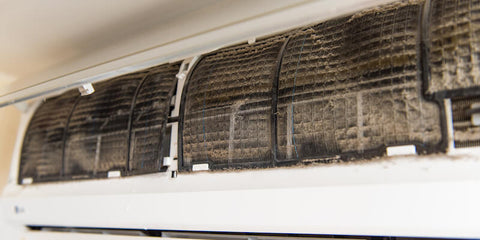




Sensibo Sky

Smart AC Control

Sensibo Air

Next-Gen Smart AC Control

Sensibo Air Pro

The World’s #1 Smart AC Control

Sensibo Air + Room Sensor

For Improved Home Automation

Sensibo Air Pro + Window Sensor

The Total Saver Bundle

Sensibo Pure

Smart Air Purifier

Sensibo Elements

Smart Air Quality Monitor

Room Sensor

For Improved Home Automation

Pure Filters

Subscribe For Auto-renewal

Window / Door Sensor

AC off when windows open

Sensibo Energy Saver Plan (Sensibo Plus)

✓ Savings ✓ Efficiency ✓ Extended

Sensibo For Airbnb Hosts

Boost Profits And Get Control

Sensibo Children Bundle

Improve Air Quality And Health

Meet the platform tailored to your business: Streamline HVAC across facilities
Learn more →Sensibo For Hotels
Lower costs and wow guestsSensibo For Schools
Better air, better focusSensibo For HVAC Integrators
Smarter projects for happier clientsSensibo OS For Brands and Manufacturers
Smarter tech faster to marketSensibo For Energy Companies
Lower demand with intelligent usageSensibo For Distributors & Resellers
Boost margins with smart climateAbout Sensibo
Bringing smart management of indoor climate to your home or business
Our Impact
Mitigating climate change & making an impact around the world.
Our Blog
Read insights from the leaders in smart air conditioning & indoor air quality solutions
Support & FAQ
Need help? Check out our FAQs or reach out to our team
Press
The essential resource hub for press
Investors
Invest in the Future of Sustainability and AI
Contact Us
We’re here to help. Reach out and let’s chat
News
Latest news and press releases from Sensibo
Affiliate Program
Promote green living and earn with Sensibo’s affiliate program

Our Reviews
Read Reviews and Take Control of Your Climate
Get the latest HVAC trends and tips straight to your inbox by joining our newsletter.

Have you ever looked at your air conditioners vents and been dismayed to see a healthy culture of mold growing? Unfortunately this is an all too common AC issue that has a range of ramifications from being detrimental to your health, your home’s cleanliness and your AC’s health.
People often wonder why their air conditioners are such a vector for mold growth and the answer is surprisingly simple. Residual moisture in a dark, warm place.
When your AC is working hard to cool warm air to your desired temperature a good deal of moisture is generated on the coils and vents of your unit. When you power off your AC this moisture clings to the inside of your AC and mixes with the now rising and often humid air. This creates the perfect environment for mold to grow.

And it doesn’t stop there… Once mold starts growing in your AC it will only continue to spread. Not only inside your unit but the spores will now become airborne when you run your air conditioner, causing new mold colonies to sprout around your home. Another drawback of a moldy AC is the potential health dangers. Many people who like to sleep with their AC’s on will notice that they may wake up feeling sick or groggy and in extreme cases legionnaires disease has been known to lurk in dirty air conditioners.
So what can you do to stop mold growth and protect the health of your air conditioner and yourself?

By booking regular air conditioner cleaning you ensure that your AC is clean and working properly. We recommend working with a licensed air conditioner technician who can properly clean and remove any mold growth. Most people who try to clean an air conditioner of mold on their own only end up spreading more spores and are not technically capable of disassembling and employing the correct cleaning agents.

This is a relatively easy task that anyone can do and can make a huge difference when it comes to mold growth and AC efficiency. Simply access and remove the front panel of your air conditioner and remove the filters. Thoroughly wash them in a well ventilated area. Let them dry before reinserting them into your air conditioner.
At Sensibo our goal is to keep your home comfortable and healthy, so we developed a new feature to combat mold growth. The Anti-Mold feature for Sensibo Plus users, when activated, will automatically run your AC fan after you have turned off your AC to dry any residual moisture. Once your AC’s insides are dry the Anti-Mold feature will shut off your AC fan automatically. By doing this after each use, mold spores will stop without the moisture that it needs to grow and spread.